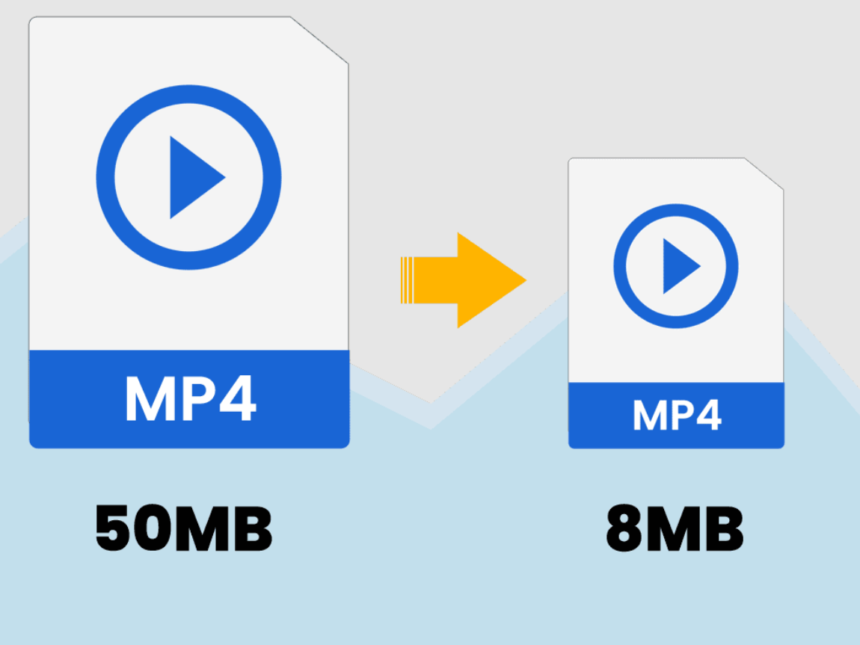As content consumption now dominates online spaces, file size optimization has become an essential component of content generation and distribution. As creators, influencers, and businesses attempt to engage audiences on platforms such as YouTube, Instagram, and others, knowing the importance of file size optimization is crucial.
Importance of Optimizing File Size
• Improves Upload Speed: Optimising file size ensures a smoother and faster-uploading process, allowing content to reach viewers quickly.
• Improves Streaming Quality: Increasing file size eliminates buffering issues and reduces video quality on streaming platforms.
• Enhances User Experience: Optimising file size encourages prolonged viewer involvement and engagement, particularly in areas with slower internet connections.
Impact of File Size on Upload Speed, Streaming Quality, and User Experience
Upload Speed: Large file sizes strain internet connections, affecting publishers and platforms that hold enormous amounts of data.
• Streaming Quality: Larger files might cause lag, buffering, and pixelation, which reduces overall streaming quality.
• User Experience: Optimising files for internet platforms makes content consumption more enjoyable and accessible for viewers all around the world.
What are video codecs and containers?
Codecs, which compress video and audio data, play an important role in balancing file size and quality. Common video codecs like H.264, H.265, and VP9, as well as common audio codecs such as AAC and MP3, provide creators with a wide range of options for tailoring their content for online platforms.
Containers, on the other hand, function as organizational vessels for multimedia data. They determine how different elements are packaged and stored. This function is shown by containers such as MP4, MKV, and AVI, each of which has its own set of features. As we explore the complexities of these codecs and containers, we discover the keys to effective file size optimization, allowing artists to provide content that perfectly complies with the criteria of platforms such as YouTube and Instagram.
Factors to consider to meet the requirements of online platforms:
Platform-Specific Requirements for Video Content
• YouTube’s codec and container preferences: Ensure seamless connection with the platform’s infrastructure to improve visibility and accessibility.
• Instagram specifications: Align multimedia content with platform rules to ensure optimal file size, engagement, and reach.
Balancing Quality and File Size
• Bitrate Considerations: Adjust the bitrate to ensure ideal quality while avoiding excessive file sizes for a seamless streaming experience.
• Resolution and Frame Rate Impact: Higher resolutions and frame rates improve visual appeal but result in larger files. Calibration is required to get the balance right.
Comparison of Popular Video Codecs
Selecting the appropriate codecs for video and audio is a vital step in reducing file size without sacrificing quality. Let’s compare popular video codecs and learn about the nuances of audio codecs.
H.264: Widely adopted and supported across multiple platforms, H.264 is notable for its efficiency in compressing video data. Its vast compatibility makes it a good alternative for creators who want to offer broad accessibility without sacrificing quality.
H.265: Building on the success of H.264, H.265 provides enhanced compression capabilities, allowing for higher quality at lower bitrates. This makes it an excellent alternative for creators who want to keep good visual quality while optimizing file sizes for efficient streaming.
VP9: As an open-source alternative, VP9 provides excellent compression efficiency. While not as widely supported as H.264 and H.265, platforms that use VP9 benefit from its ability to produce high-quality video at low bitrates.
Selecting the Appropriate Audio Codec
AAC: Advanced Audio Coding (AAC) is a standard for online streaming that balances quality and low bitrates. AAC, which is widely supported across platforms, is an excellent choice for creators who want to provide their audiences with high-quality audio experiences.
MP3: Despite being a legacy codec, MP3 is still widely compatible and a popular choice. While newer codecs have improved efficiency, MP3 remains a viable alternative for situations requiring broad compatibility.
Understanding Video Container Features
The choice of video containers plays a crucial role in shaping how video and audio data are packaged and stored. Let’s explore the features to consider when understanding containers
Compatibility with Different Devices and Platforms:
Optimal containers should be broadly compatible, allowing for seamless playback across a variety of devices and platforms. This is especially crucial when content is accessed through multiple platforms.
Support for Multiple Audio and Video Streams:
Containers that support multiple audio and video streams allow creators to integrate a variety of content in a single file. This capability is useful in cases where different language tracks, subtitles, or additional audiovisual elements are required.
Examples of Popular Containers
MP4 (MPEG-4 Part 14): Recognised for its global compatibility, MP4 has become the preferred multimedia container. Its widespread acceptance means that content creators can reach a large audience without worrying about platform-specific limits.
MKV (Matroska): MKV is an open-source format that supports a variety of audio, video, and subtitle formats. MKV’s adaptability makes it a top pick for people looking for a container that can easily accommodate a wide range of content.
Practical Tips for Video File SizeOptimization
Efficient file size optimization involves more than just codec and container selection; practical implementation is key. Here are actionable tips for content creators:
- Using Video Editing Software: Use video editing software to adjust settings such as bitrate, resolution, and frame rate. This enables precise tweaking of content to platform parameters.
- Compression Tools: Use specialized compression tools to reduce file sizes without sacrificing quality. These tools assist in achieving the perfect balance for the best streaming performance.
- Batch Processing for Efficiency: Using batch processing can help to streamline the optimization process. This effective approach ensures that file sizes are adjusted consistently across different pieces of content, saving creators time and effort.
Conclusion
Navigating the complexities of file size optimization for online platforms necessitates a careful blend of codec, container, and practical strategies. Understanding platform needs, balancing quality considerations, and using efficient strategies can help content creators ensure that their multimedia content reaches users smoothly, improving the entire viewing experience.














